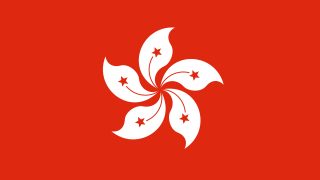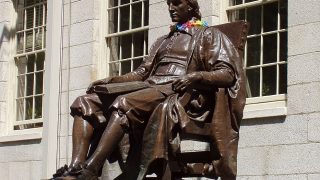Months of massive pro-democracy demonstrations in this semiautonomous city under Chinese authority have grown increasingly tense, as police have used water cannons and tear gas to disperse crowds, and some protesters armed with rocks and even homemade gasoline bombs have attacked police.
Voice of America Mandarin reporter Yihua Lee has been among the thousands of journalists in Hong Kong that have found themselves in dangerous situations, as clashes erupted between masked protesters and police, and in areas where police have fired tear gas into crowds.
“I do feel the unfriendly feeling from the police, when we are covering the protests on really the front lines. Maybe they feel we are blocking their way, or maybe they are feeling that we are not really neutral,” said Lee.
Police targeting
Journalists often find themselves in the middle of clashes while reporting on conflicts. However during these pro-democracy demonstrations, both the Hong Kong Journalist Association and the Hong Kong Foreign Correspondents Club have accused the police of purposefully targeting reporters.
“Since June, journalists have been the target of police brutality and hostile treatment, physical and verbal abuses and attacks,” said Chris Yeung, the chairperson of the Hong Kong Journalists Association.
Video evidence, said Eric Wishart the vice president of the Hong Kong Foreign Correspondents Club, shows police at times “deliberately” using tear gas, pepper spray, water cannons and physical force to “obstruct journalists trying to cover the arrests and other police action.”
“They just don’t want journalists sticking their noses in when they’re arresting people. The way they arrest people can be pretty brutal, and they don’t want cameras poked in,” said Wishart.
Hong Kong police have denied they are targeting journalists but said there is room for improvement in the coordination between police and the media.
Journalists injured
Despite wearing yellow vests to identify themselves as journalists, an increasing number of reporters in Hong Kong have been injured or attacked during the protests.
In September, an Indonesian journalist was hit in the eye by a rubber bullet, after demonstrators in the area threw plastic bottles at the police. She was among a group of journalists standing on a pedestrian bridge when police fired directly at them. The injured journalist has been permanently blinded in one eye.
In a recent scuffle between protesters and police, a journalist was hit by a fiery gasoline bomb thrown by a protester. The reporter was not injured and it is reported that the protester was trying to hit police with the gasoline bomb.
Recently a journalist had his gas mask forcefully removed by police after tear gas was fired in the area. This came days after the Hong Kong government enacted a law banning protesters from wearing masks, but exempted journalists covering the demonstrations.
In August, anti-government protesters also attacked a journalist from the Global Times, a mainland Chinese news organization, in the Hong Kong International Airport, and there have been other reports of Cantonese speaking Hong Kong protesters assaulting and intimidating Mandarin speaking reporters they identify as pro-Beijing.
Press freedom
The Hong Kong Journalists Association has condemned all attacks against reporters, and called for both the Hong Kong government and the pro-democracy protesters to protect the right of an independent press to report on all sides of this volatile conflict.
“In this case it’s even more important because it’s so controversial, so divided in the society, that only truth can help solve the problem. And without reporters you can’t really get the whole truth,” said Yeung.
The Hong Kong Foreign Correspondents Club is also providing safety training for journalists in hostile environments, which Hong Kong has now become.
Hong Kong “has always been a safe place for journalists,” said Wishart, and the vast majority of journalists here are “not prepared” for conflict reporting. “They’re really learning on the job now.”
Source: Voice of America



